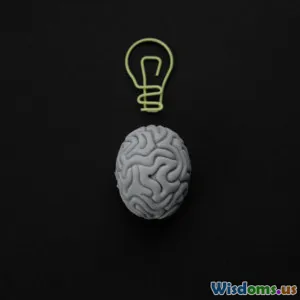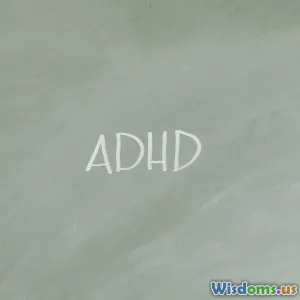
The Psychology of Dream Interpretation
8 min read Explore how brain science reveals the psychology behind dream interpretation and what our dreams truly mean. (0 Reviews)
The Psychology of Dream Interpretation: Unlocking the Brain's Secret Language
Dreams have captivated human curiosity for millennia. From ancient mythologies to modern therapy, dream interpretation stands as a bridge between our conscious mind and the enigmatic world of the subconscious. But what exactly happens in our brains during dreams, and how does psychology decode these nighttime narratives? This article fortifies your understanding with neuroscience insights, psychological theories, and practical examples, unveiling the fascinating cognitive mechanisms behind dream interpretation.
Understanding Dreams: More Than Just Nighttime Stories
Dreams occur primarily during Rapid Eye Movement (REM) sleep—a phase when brain activity closely resembles wakefulness. Neuroscientific research highlights the complexity of this state, where the brain integrates memories, emotions, and sensory fragments into vivid experiences.
Brain Activity During Dreams
Functional MRI studies reveal that regions like the amygdala, responsible for processing emotions, and the hippocampus, tied to memory formation, become highly active during REM sleep. Conversely, the prefrontal cortex—linked to logical reasoning and self-control—tends to deactivate. This dissociation may explain why dreams often feel illogical or emotionally heightened.
For example, studies published in Nature Neuroscience show the visual cortex lights up intensely, accounting for the vivid imagery. The suppression of the prefrontal cortex activity explains why we often accept bizarre dream scenarios without question.
Psychological Theories of Dream Interpretation
Various paradigms exist for interpreting dreams, each emphasizing different dimensions of human psychology.
Freud’s Psychoanalytic Perspective
Sigmund Freud viewed dreams as a “royal road to the unconscious.” According to his seminal work, The Interpretation of Dreams (1899), dreams mask latent desires and unresolved conflicts. For instance, dreaming of climbing a steep mountain could symbolize a struggle with achieving life goals constrained by inner anxieties.
Freud introduced the idea of dream symbolism: manifest content (what we remember) disguises latent content (hidden psychological meaning). Yet, despite its foundational role, Freud’s theory is often criticized for overemphasizing sexual and aggressive motives.
Jungian Archetypes and Collective Unconscious
Carl Jung expanded dream theory by integrating the concept of a collective unconscious shared across humanity. Dreams often feature archetypal symbols—anagnostic figures like the Wise Old Man or the Shadow—that represent universal human experiences.
For example, encountering a shadow figure in a dream may indicate repressed aspects of the self that one must integrate for psychological growth. Jungian dream interpretation encourages self-reflection and individuation, turning dreams into tools for personal development.
Contemporary Cognitive Theories
Modern psychology tends to focus on the information-processing role of dreams. The Activation-Synthesis Hypothesis posits that dreams result from the brain stitching together random neuronal firing into coherent narratives—essentially the brain's attempt to make sense of internal chaos.
Another perspective, the Threat Simulation Theory, argues dreams evolved to simulate threatening scenarios, thereby preparing us cognitively and emotionally for real-life dangers. Empirical data supports this, showing heightened amygdala activity in dream stages often linked to fear and threat processing.
Dream Interpretation in Practice: Case Studies and Empirical Insights
Therapeutic Use of Dream Analysis
Clinicians employ dream interpretation in psychotherapy to access emotional states or conflicts difficult to articulate consciously. For example, patients suffering from PTSD often recount nightmares that reveal traumatic memories and distorted perceptions. Safe exploration of these dreams can facilitate trauma integration and healing.
A 2017 study in the Journal of Clinical Psychology demonstrated that guided dream interpretation helped reduce anxiety symptoms by fostering emotional insight.
Cross-Cultural Perspectives on Dream Meaning
Dream interpretation varies drastically across cultures, reflecting different worldviews. Indigenous Australian people view dreams as a connection to ancestral spirits, while in Islamic tradition, vivid dreams hold prophetic significance. These cultural frameworks shape how psychological meanings are assigned.
Understanding these perspectives enriches the psychological interpretation, providing a more nuanced and culturally respectful approach.
Practical Tools for Interpreting Your Dreams
- Keep a Dream Journal: Writing down dreams immediately upon waking preserves memories and reveals recurring themes.
- Identify Emotions: Focus on feelings experienced in the dream, which provide clues to subconscious concerns.
- Look for Symbols: Consider personal associations rather than universal symbols – for example, a snake might mean fear to one, transformation to another.
- Reflect on Current Life Contexts: Dreams often mirror waking challenges or desires.
By systematically engaging with these steps, one can gain greater self-awareness and mental clarity.
Conclusion: Embracing the Mystery and Science of Dreams
Dream interpretation is a dynamic blend of art and science influenced by brain physiology and psychological frameworks. While neuroscience has illuminated the structures and functions underlying dreams, psychology continues to interpret their profound meanings within our lives.
Whether you view dreams as mystical messages, reflections of brain activity, or pathways into the subconscious mind, engaging with them thoughtfully offers compelling insights and potential therapeutic benefits. As Carl Jung famously said, "Who looks outside, dreams; who looks inside, awakes."
Explore your dreams not just as fleeting images but as powerful windows into your mind.
References:
- Hobson, J. A., & Pace-Schott, E. F. (2002). The cognitive neuroscience of sleep: neuronal systems, consciousness and learning. Nature Reviews Neuroscience.
- Freud, S. (1899). The Interpretation of Dreams.
- Barrett, D. (2017). Dream Therapy and Anxiety Reduction. Journal of Clinical Psychology.
- Revonsuo, A. (2000). The reinterpretation of dreams: An evolutionary hypothesis of the function of dreaming. Behavioral and Brain Sciences.
- Jung, C. G. (1964). Man and His Symbols.
Rate the Post
User Reviews
Popular Posts





















